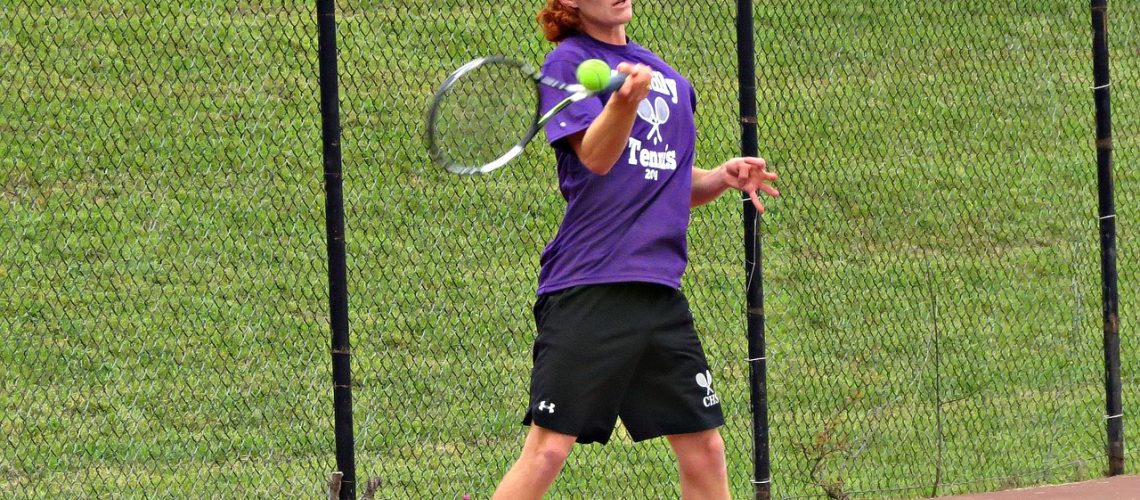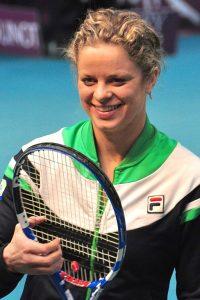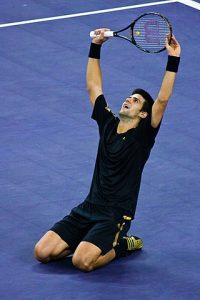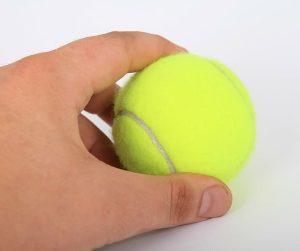We may earn money or products from the companies mentioned in this post.
Introduction

Welcome to the exciting world of pickleball! This fast-paced sport has gained immense popularity in recent years, captivating players of all ages and skill levels Let’s dive into the brief history of pickleball and explore the differences in court sizes compared to tennis
Brief History of Pickleball
Pickleball, a unique blend of tennis, badminton, and ping pong, was invented by Joel Pritchard, Bill Bell, and Barney McCallum back in 1965 on Bainbridge Island, Washington It all began when their families were looking for a new game to keep them entertained during a lazy summer afternoon
The founders improvised with what they had – some ping pong paddles and a plastic ball They soon realized that it was challenging to play using just those materials So they lowered the net on their badminton court and created wooden paddles specifically designed for this new game
As word spread about this fun and accessible sport, more people started playing pickleball across the United States In no time at all, pickleball became one of America’s fastest-growing sports!
Comparison of Court Sizes between Tennis and Pickleball
Tennis courts are well-known for their vastness, requiring players to cover significant ground during matches On the other hand, pickleball courts offer a more compact playing area that encourages quick reflexes and agility
1 Tennis Court Dimensions:
- Tennis courts measure 78 feet long from baseline to baseline for singles matches
- For doubles matches, tennis courts are wider at 36 feet across
- The service boxes are situated 21 feet from the net on each side
- The net stands at 3 feet, 6 inches in height at the center
2 Pickleball Court Dimensions:
- Pickleball courts are significantly smaller, making the game more accessible for players of all ages and abilities
- The dimensions of a pickleball court are 20 feet wide by 44 feet long for both singles and doubles matches
- There are non-volley zones located on each side of the net, extending 7 feet back from the net These areas are commonly referred to as “the kitchen” and require players to be strategic in their shot selection
- The net stands at 36 inches high at the center, providing a reasonable challenge for players to clear it with their shots
Now that we have explored the origins of pickleball and compared court sizes between tennis and pickleball, let’s dive deeper into the rules, equipment, and strategies that make this sport so captivating Stay tuned!
Court orientation and layout are crucial factors to consider when determining the number of pickleball courts that can fit on a tennis court The orientation can be either vertical or horizontal, depending on the available space and desired configuration A vertical alignment allows for more courts to be placed side by side, while a horizontal alignment allows for more courts to be placed in a row The choice between the two depends on the dimensions of the tennis court and the desired number of pickleball courts
The space required for boundaries and safety zones is another important consideration Pickleball courts require specific boundary lines and safety zones around them to ensure fair play and player safety These boundaries should not overlap with any existing structures or obstructions on the tennis court, such as nets or posts Sufficient space must be allocated to accommodate these boundaries and safety zones without compromising the integrity of either sport
Surface material compatibility is also a key factor in determining the number of pickleball courts that can be added to a tennis court Different surface materials have varying impacts on gameplay quality for both tennis and pickleball Tennis surfaces can range from hardcourts, clay courts, to grass courts, each offering unique characteristics that affect ball bounce and player movement Similarly, pickleball surfaces can include concrete, asphalt, or modular surfaces, each providing different levels of grip and ball response
Furthermore, markings compatibility is essential when considering adding pickleball courts to a tennis court Clear visibility of court lines is vital for both sports to ensure accurate gameplay and fair calls The markings for pickleball will need to coexist harmoniously with existing tennis court markings without causing confusion or hindering gameplay in any way
In conclusion, several factors impact the number of pickleball courts that can fit on a tennis court Court orientation and layout considerations determine how many courts can be accommodated within the available space Surface material compatibility affects gameplay quality for both sports, while markings compatibility ensures clear visibility and accurate gameplay By carefully considering these factors, tennis courts can be transformed to accommodate pickleball courts and enhance the overall sporting experience
Common Configurations for Fitting Multiple Pickleball Courts on a Tennis Court

When it comes to maximizing the use of space on a tennis court for pickleball enthusiasts, there are several common configurations worth considering Each configuration has its own advantages and disadvantages, allowing players to choose the one that best suits their needs
Configuration A: Two Pickleball Courts Sharing the Same Net as a Tennis Court
In this configuration, two pickleball courts are created by sharing the same net as a tennis court One advantage of this setup is that minimal re-painting is needed, making it a low-cost conversion option However, one downside is that this configuration is limited to only two courts, which might not be sufficient for larger groups or tournaments
Configuration B: Four Pickleball Courts with Separate Nets
For those looking to accommodate more players simultaneously, configuring four pickleball courts with separate nets is an ideal choice This setup allows multiple games to take place at once and can help reduce waiting times However, it’s important to note that additional painting and equipment will be required compared to Configuration
Configuration C: Six Pickleball Courts Using Existing Tennis Boundaries
If maximum utilization of space without altering original markings is a priority, then Configuration C might be the preferred option By utilizing existing tennis boundaries, six pickleball courts can be created While this allows for even more players to participate at once, it’s worth mentioning that cramped playing conditions may arise due to the close proximity of the courts
In conclusion, when deciding on the configuration for fitting multiple pickleball courts on a tennis court, it’s important to consider factors such as cost-effectiveness, capacity requirements, and playing conditions Each configuration provides its own unique advantages and disadvantages, allowing players to tailor their setup based on their specific needs and preferences
Guidelines for converting a tennis court into multiple pickleball courts

If you’re considering converting a tennis court into multiple pickleball courts, there are several important guidelines to follow Before diving into the conversion process, it’s crucial to take some preparation steps to ensure a successful transformation
Preparation steps before conversion
- Assess the condition of the existing tennis court surface: Before proceeding with any conversions, carefully evaluate the current state of the tennis court Look for any cracks, uneven patches, or other damages that may need repair or resurfacing
- Determine optimal layout based on factors mentioned in section II: Consider various factors such as available space, local regulations, and player preferences when deciding on the layout of your new pickleball courts Take into account how many courts can fit comfortably within the existing space without compromising playing conditions
Markings and equipment requirements
Once you’ve completed the necessary preparations, it’s time to focus on markings and equipment requirements for your pickleball courts
- Painting new lines or using temporary tapes/markers: To clearly define the boundaries of each pickleball court, you have options like painting new lines directly onto the surface or using temporary tapes/markers Choose a method that suits your budget and long-term maintenance plans
- Nets, posts, and other necessary equipment: In addition to marking the boundaries, you’ll need to install nets and posts specific to pickleball regulations Ensure that these are properly positioned and securely anchored to create an ideal playing environment
Maintenance and scheduling considerations
Maintaining your converted pickleball courts is essential for their longevity and enjoyment Additionally, managing scheduling between tennis and pickleball players is vital to ensure fair access for all
- Balancing the usage between tennis and pickleball players: If your facility caters to both tennis and pickleball enthusiasts, find a balance that satisfies the needs of both groups Allocate specific time slots or days for each sport to avoid conflicts and promote inclusivity
- Routine maintenance for preserving optimal playing conditions: Implementing a regular maintenance schedule is crucial in preserving the pristine condition of your pickleball courts This may include surface cleaning, crack repairs, net inspections, and overall upkeep to provide players with an exceptional playing experience
By following these guidelines, you’ll be well-equipped to convert a tennis court into multiple pickleball courts successfully Remember to prioritize safety, functionality, and enjoyment for all players involved!
Conclusion

In this blog post, we explored the idea of converting a tennis court into a multi-use space that can accommodate both tennis and other sports We discussed the benefits of repurposing the court, such as maximizing space utilization and increasing the versatility of your sporting facility
By converting your tennis court into a multi-use space, you can attract a wider range of athletes and enthusiasts This allows for greater inclusivity and fosters a sense of community among different sports enthusiasts Additionally, it offers an opportunity to generate additional revenue by hosting various sporting events or renting out the space to different sports organizations
We highlighted some key considerations when undertaking this conversion project, such as ensuring proper markings for different sports, installing adjustable nets or dividers, and implementing safety measures to prevent accidents during simultaneous use
If you are looking to make the most out of your tennis court and create a dynamic space that caters to multiple sports, we encourage you to explore the possibilities of converting it into a multi-use facility By doing so, you can enhance the value of your sporting venue and provide an inclusive environment for athletes from various disciplines
Share Your Experiences
We would love to hear about your experiences with converting tennis courts into multi-use facilities Have you undertaken such a project? What challenges did you face? What benefits have you observed? Share your insights in the comments section below!
Ask Questions
If you have any questions regarding converting tennis courts or need advice on how to go about creating a versatile multi-use space for sports, feel free to ask! Our community is here to support each other and share knowledge Leave your queries in the comments section, and our experts will be happy to assist you
Useful Links

How many Pickleball Courts fit on a Tennis Court?
How to transform a tennis court into a pickleball court in 2023
You Won’t Believe How Many Pickleball Courts Can Fit In a …
Playing Pickleball on a Tennis Court
How to fit 4 Pickleball Courts on a Tennis Court – Racketopia
How to Convert Tennis Courts to Pickleball Courts
Step by Step Guideline of How to Play Pickleball on …
How Many Pickleball Courts Fit On A Tennis Court?
Can You Play Pickleball On a Tennis Court? Everything …
Pickleball Court vs Tennis Court – The Differences
A Quick Guide to Comparing Court Sizes
Pickleball Court Layouts
How Many Pickleball Courts Fit on a Tennis Court?
How Many Pickleball Courts Fit on a Tennis Court?
Washington’s Landing Court Renovations | Engage Pittsburgh
Definitive Guide: Pickleball Courts vs Tennis Courts
Can You Play Pickleball On A Tennis Court?
How to Convert Tennis Court to Pickleball Court
Can Pickleball Be Played on a Tennis Court? – All In The Sport
Can You Play Pickleball On A Tennis Court? | Paddle2Racket






